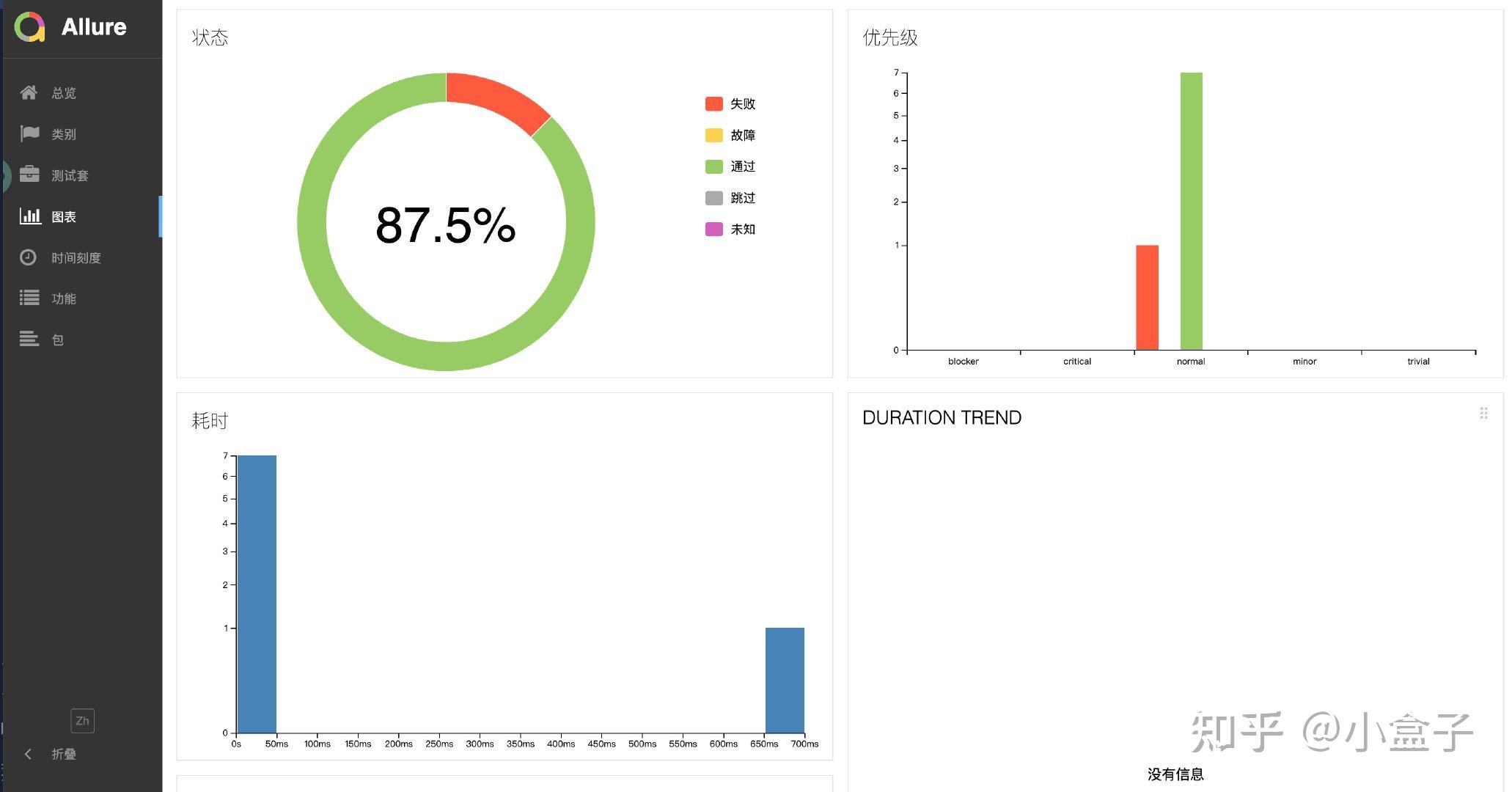聊聊 Java 的单元测试
单元测试框架
Java 中,
JUnit
和
TestNG
是最受欢迎的单元测试框架。
- JUnit
- TestNG
JUnit
首先是大名鼎鼎的 JUnit , JUnit 已经成为 Java 应用程序单元测试的事实标准 。
JUnit 是一个开源的 Java 语言的单元测试框架,专门针对 Java 设计,使用最广泛。JUnit 目前最新版本是 5

JUnit5 的组成:JUnit 5 = JUnit Platform + JUnit Jupiter + JUnit Vintage
JUnit5 建议使用 Java8 及以上版本
-
JUnit Platform
是在 JVM 上启动测试框架的基础,它定义了
TestEngine在平台运行的新测试框架的 API -
JUnit Jupiter
它用于编写测试代码的新的编程和扩展模型。它具有所有新的 Junit 注释和
TestEngine实现来运行这些注释编写的测试。 - JUnit Vintage JUnit4 已经存在了很长时间,并且有许多以 JUnit4 编写的测试。JUnit Jupiter 还需要支持这些测试。为此,开发了 JUnit Vintage 子项目。提供了一个测试引擎,用于在平台上运行基于 JUnit 3 和 JUnit 4 的测试。它要求 JUnit 4.12 或更高版本出现在类路径或模块路径中。从它的名字 Vintage(古老的;古色古香的)中也能有所体会。
简单例子
我们先来个最简单的例子,别看简单,很多人会犯错
@SpringBootTest
@RunWith(SpringRunner.class)
public class JunitTest {
@Test
public void testJunit(){
System.out.println("junit test");
很简单对吧,如果你用了 SpringBoot 简单到好像没啥说的,其实不然,我们来聊聊:
首先,这段代码使用的是 JUnit 4 还是 JUnit5 ? 你可能会觉得,4 和 5 没啥区别吧,用哪个不一样吗? 代码能跑不就行了?
不是的,4 和 5 肯定有区别这个不用我说了。能跑没问题,但如果你不管是 4 还是 5 都认为一样,API 混用,甚至乱用,那这时候测试出现的各种报错,导致你很懵逼,而且不知道为什么,一通乱查也不知所然。
上面这段代码其实是 JUnit 4 版本,我们看一下 import 就一目了然了,然而可能你在开发的时候没太注意这里是 4 还是 5
import org.junit.Test;
import org.junit.runner.RunWith;
import org.springframework.boot.test.context.SpringBootTest;
import org.springframework.test.context.junit4.SpringRunner;
这里确定了,使用的是 4 的版本,这里有几个要注意的点:
-
@Test的包是org.junit.Test,不要搞错了,因为有好几个同名包 -
需要
@RunWith(SpringRunner.class) -
测试类和测试方法
需要
public修饰
我们看下完整的例子:
import org.junit.Test;
import org.junit.runner.RunWith;
import org.springframework.boot.test.context.SpringBootTest;
import org.springframework.test.context.junit4.SpringRunner;
@SpringBootTest
@RunWith(SpringRunner.class)
public class JunitTest {
@Test
public void testJunit(){
System.out.println("junit test ");
这里强调下环境 ,springboot2.2.x 之前支持 JUnit 4
上面有一点提到了 需要
public
修饰的问题,这不很正常吗,为什么要强调?
那是因为 JUnit 5 不需要了,我们看一下用 JUnit 5 来实现的同样的例子 (SpringBoot 2.2.x 之后支持 JUnit 5):
import org.junit.jupiter.api.Test;
import org.springframework.boot.test.context.SpringBootTest;
@SpringBootTest
class JunitTest {
@Test
void testJunit5(){
System.out.println("junit5");
这么简单吗? 对,就是这么简单,所以我说 4 和 5 不一样。我们来看区别的地方:
-
@Test的包是org.junit.jupiter.api.Test -
不需要
@RunWith(SpringRunner.class) -
测试类和测试方法
不需要
public修饰
我见过很多同学在写测试用例时出现的所谓诡异问题,都是因为他自己都没搞清楚用的是 4 还是 5 的情况下将 4 和 5 混用导致的。
如果你的测试用例是 4 ,可以迁移到 5 了,有关 JUnit 4 迁移到 JUnit5 的话题可以参考这篇文章 ,通过工具可能节省很多时间: https:// blog.jetbrains.com/idea /2020/08/migrating-from-junit-4-to-junit-5/
我们再来看一下 pom 依赖这里,你是不是经常看到有关 test 的依赖是这样写的:
<dependency>
<groupId>org.springframework.boot</groupId>
<artifactId>spring-boot-starter-test</artifactId>
<scope>test</scope>
<exclusions>
<exclusion>
<groupId>org.junit.vintage</groupId>
<artifactId>junit-vintage-engine</artifactId>
</exclusion>
</exclusions>
</dependency>
为啥? 为什么要排除 junit-vintage-engine ?如果你认真阅读了前文,你应该能猜到为什么了。
JUnit Vintage 是为了兼容 3 和 4 的一个 engine,如果我们的测试代码都用 5 实现,不需要兼容 3 和 4 ,那要它干嘛? 当然是干掉呀,哈哈。
但如果你需要兼容,那请不要那么鲁莽。上面的这段 dependency 主要用于 spring-boot-starter-test 的 2.2.x 和 2.3.x 版本中。 spring-boot-starter-test 2.4.x 版本中,已经不再包含 junit-vintage-engine 这个依赖项了
常规套路
| Annotations | 描述 |
|---|---|
| @BeforeEach | 在方法上注解,在每个测试方法运行之前执行。 |
| @AfterEach | 在方法上注解,在每个测试方法运行之后执行 |
| @BeforeAll | 该注解方法会在所有测试方法之前运行,该方法必须是静态的。 |
| @AfterAll | 该注解方法会在所有测试方法之后运行,该方法必须是静态的。 |
| @Test | 用于将方法标记为测试方法 |
| @DisplayName | 用于为测试类或测试方法提供任何自定义显示名称 |
| @Disable | 用于禁用或忽略测试类或方法 |
| @Nested | 用于创建嵌套测试类 |
| @Tag | 用于测试发现或过滤的标签来标记测试方法或类 |
| @TestFactory | 标记一种方法是动态测试的测试工场 |
常规套路不说了,比较简单,一看就明白,说几个有意思的。
重复性测试
@RepeatedTest(5)
void repeatTest(TestInfo testInfo,RepetitionInfo repetitionInfo){
System.out.println("repeat:" + testInfo.getDisplayName());
System.out.println("这是第 "+ repetitionInfo.getCurrentRepetition()+ "次重复");
不用自己写 for 循环了,人家自己带重复的注解,上面两个变量也是自己带的,方便拿到重复信息。
基于参数测试
@ParameterizedTest
@ValueSource(strings = {"java", "python", "go"})
void containsChar(String candidate) {
assertTrue(candidate.contains("o"));
如果你的参数少,也不用写循环了,直接写注解里,还挺方便的。
超时测试
@Test
@Timeout(value = 500, unit = TimeUnit.MILLISECONDS)
void failsIfExecutionTimeExceeds500Milliseconds() {
// fails if execution time exceeds 500 milliseconds
可以设置 超时的单位和时长
在 assert 中也可以测超时,可以这样写:
// timed out after 5 seconds
@Test
void test_timeout_fail() {
// assertTimeout(Duration.ofSeconds(5), () -> delaySecond(10)); // this will fail
assertTimeout(Duration.ofSeconds(5), () -> delaySecond(1)); // pass
void delaySecond(int second) {
try {
TimeUnit.SECONDS.sleep(second);
} catch (InterruptedException e) {
e.printStackTrace();
并行测试
以上测试用例都是用主线程或者单线程跑的,下面我们玩儿个 多线程并行 test
首先你要在你的 classpath 下面建一个文件
junit-platform.properties
接着加两行配置
junit.jupiter.execution.parallel.enabled=true
junit.jupiter.execution.parallel.mode.default=concurrent行了,再跑你的用例就是多线程并行执行的了,当然如果用例本来就设计成单线程的看不出来,那可以使用 Repeat 试一下,比如上面讲过的这个:
@RepeatedTest(5)
void repeatTest(TestInfo testInfo,RepetitionInfo repetitionInfo){
System.out.println("repeat:" + testInfo.getDisplayName());
System.out.println("这是第 "+ repetitionInfo.getCurrentRepetition()+ "次重复");
上面这个是对一个方法的重复执行并行,有时候我们是想让一个 类中的多个方法并行 ,能不能做到? 可以,改下配置就好了
junit.jupiter.execution.parallel.enabled = true
junit.jupiter.execution.parallel.mode.default = concurrent
junit.jupiter.execution.parallel.mode.classes.default = same_thread如果反过来呢? 多个类并行,类中的方法串行 也可以,还是改配置:
junit.jupiter.execution.parallel.enabled = true
junit.jupiter.execution.parallel.mode.default = same_thread
junit.jupiter.execution.parallel.mode.classes.default = concurrentMockMVC
你测个
service
测个
dao
很简单,把 Bean 注入就可以了,
Controller
怎么测? 我们要利用下 MockMVC 了
“ MockMvc 实现了对 Http 请求的模拟,能够直接使用网络的形式,转换到 Controller 的调用,这样可以使得测试速度快、不依赖网络环境,而且提供了一套验证的工具,这样可以使得请求的验证统一而且很方便。
”
我们先看一个简单的例子:
import org.junit.jupiter.api.*;
import org.springframework.beans.factory.annotation.Autowired;
import org.springframework.boot.test.autoconfigure.web.servlet.AutoConfigureMockMvc;
import org.springframework.boot.test.context.SpringBootTest;
import org.springframework.test.web.servlet.MockMvc;
import static org.hamcrest.Matchers.containsString;
import static org.junit.jupiter.api.Assertions.assertTrue;
import static org.springframework.test.web.servlet.request.MockMvcRequestBuilders.get;
import static org.springframework.test.web.servlet.result.MockMvcResultHandlers.print;
import static org.springframework.test.web.servlet.result.MockMvcResultMatchers.content;
import static org.springframework.test.web.servlet.result.MockMvcResultMatchers.status;
@SpringBootTest
@AutoConfigureMockMvc
class HelloControllerTest {
@Autowired
private MockMvc mockMvc;
@Autowired
private HelloController helloController;
@Test
public void shouldReturnDefaultMessage() throws Exception {
this.mockMvc.perform(get("/hello"))
.andDo(print())
.andExpect(status().isOk())
.andExpect(content().string(containsString("Hello World")));
解释下没见过的注解:
-
@AutoConfigureMockMvc:用于自动配置 MockMvc, 配置后 MockMvc 类可以直接注入
此外我们利用 @Autowired 注入了一个 MockMvc 的 Bean 实例。我们通过这个例子来模拟请求
/hello
这个 Controller 资源,并且通过判断返回的 content 内容是否包含
Hello World
字符串来决定这个用例的执行是否成功。
注意 imports 部分,我们导入了 MockMvcRequestBuilders 的一些静态方法。整个方法就一行代码,解释一下:
- perform : 执行一个请求
- andDo : 添加一个结果处理器,表示要对结果做点什么事情,比如此处使用 print():输出整个响应结果信息
- andExpect : 添加执行完成后的断言
我们看下执行结果:
MockHttpServletRequest:
HTTP Method = GET
Request URI = /hello
Parameters = {}
Headers = []
Body = null
Session Attrs = {}
Handler:
Type = com.xiaobox.springbootdemo.controller.HelloController
Method = com.xiaobox.springbootdemo.controller.HelloController#hello(String)
Async:
Async started = false
Async result = null
Resolved Exception:
Type = null
ModelAndView:
View name = null
View = null
Model = null
FlashMap:
Attributes = null
MockHttpServletResponse:
Status = 200
Error message = null
Headers = [Content-Type:"text/plain;charset=UTF-8", Content-Length:"12"]
Content type = text/plain;charset=UTF-8
Body = Hello World!
Forwarded URL = null
Redirected URL = null
Cookies = []我们来看下一个例子
@WebMvcTest
class HelloControllerTest {
@Autowired
private MockMvc mockMvc;
@Autowired
private HelloController helloController;
@Test
public void shouldReturnDefaultMessage() throws Exception {
this.mockMvc.perform(get("/hello"))
.andDo(print())
.andExpect(status().isOk())
.andExpect(content().string(containsString("Hello World")));
你发现我们只是把 class 头上的注解换成了 @WebMvcTest,其实的没变,是的。但却比上一段代码快 3 倍。为什么?
因为之前的写法会把 Spring 完整的应用上下文全启动了,而 @WebMvcTest 是将测试范围缩小到仅启动 web 层,所以会快。当你只想测试 http 到 controller 这层的时候,可以用 @WebMvcTest 注解。
你甚至还可以告诉框架只启动某一个 controller 这样更快,比如:
@WebMvcTest(HomeController.class)
上面是 WebMvcTest 的第一个场景, 我们来看第二个场景:也是测 controller ,但 controller 调用的 service 我们也 mock,不走真正 service 代码逻辑。这在有时你的 service 没准备好,或者不方便直接调用时会很有用 。
@WebMvcTest
class HelloControllerTest {
@Autowired
private MockMvc mockMvc;
@Autowired
private HelloController helloController;
@Test
public void greetingShouldReturnMessageFromService() throws Exception {
Mockito.when(service.greet()).thenReturn("Hello, Mock");
this.mockMvc.perform(get("/greeting")).andDo(print()).andExpect(status().isOk())
.andExpect(content().string(containsString("Hello, Mock")));
上面的代码我们用到了 Mockito, 可能你听过周杰伦一首新歌叫 Mojito ,对,Mockito 的命名就是对 Mojito (一种传统的古巴高球鸡尾酒)的戏称

简单来说
Mockito
是一个 java 做单元测试的 Mock 框架:
https://
site.mockito.org/
解释下我们上面这行代码
Mockito.when(service.greet()).thenReturn("Hello, Mock");
意为: 当调用 service 的 greet 方法的时候,返回值为 “Hello Mock”,其实没真调那个方法,就是 Mock 了一下,直接给了个返回值。用英文说就是 :
When the x method is called then return y
当然 Mockito 在假造上是很有实力的,它有丰富的 API 供你组合使用,有兴趣可以看一看文档和源码注释。
讲到这儿,一定有同学会问,只测 Controller ,那我就用 Postman 就行 了,甚至 curl 都行,为啥要写用例,我不写用例。
哈哈,我相信很多后端同学都没认认真真把用例写完,尤其是 controller 这层的,不装逼,我也是。那我们有必要讨论一下 到底是用 Postman 还是用 MockMVC ?
首先说说 MockMVC 的好处:
- 可编程,这就给了你无限的自由空间,想怎么折腾随便你,你是上帝
- 除了写的时候花点时间外,调试的时候速度快,而且可配置,你要想只测 controller,就只启动 controller 的上下文就行了
- 顺便把测试用例写了,测试同学省心了,给自动化测试提供了基础
- 间接提高代码质量
其他的我不说,我就说最后一点。我注意到一个现象,很多开发同学拿测试同学当工具人,自己写的代码自己不怎么测试,直接交给测试让他们提 BUG,然后改,BUG 多也不觉得害臊。开发是爽了,由于代码质量差,整个项目的进度都被拖慢了。你可能会说这是软件质量管理的问题,是规则制定的有问题,如果出 BUG 扣钱就没这事儿了。
我要说的是,在软件开发这个领域,很多事情不是刻板的死规则,即便是制定了这样的规则,也不一定有效。更多的时候是整个团队的文化和风气,领导者有责任将整个研发团队的文化和风气带向正轨。什么是正轨 ? 其实我们都知道! 我们都知道应该写高质量的代码,bug 少的代码,设计合理的代码,不断重构、不断维护的代码,我们都知道要做好自己的事就会提高整个团队的效率,我们都知道应该写注释、写文档,我们都知道.....
我们都知道,但我们也知道项目时间紧,而且专门有人一遍遍强调 deadLine ,有人关心你的开发进度,关心功能实现了没有,关心老板有没有意见,没有人关心你累不累,关心你几点下的班,关心规划合不合理,关心代码质量高不高,关心与软件真正有关系的一切。所以做一个真正的 软件研发团队的 Leader 不容易,遇到好 Leader 是你的福气。
扯多了,我们回头来看 Postman ,Postman 的好处好像也不用我多说了,确实,如果只是简单的做 Controller 连通测试,用 Postman 一点儿问题没有,也比写程序快,但如果你的需求时有正好是 MockMVC 的优点可以覆盖的地方,那么就动动手,写写程序吧。
测试报告
想成一份漂亮的测试报告 ? 后端同学说了,整那花里胡哨的有啥用呢,简单一点儿不好吗?
好,简单点儿当然可以,但 UI 带给我们的价值不就是一图胜千言嘛,让无论是前端、后端、测试同学都能一目了然,减轻大脑处理信息的成本。
来,我们先上成果


怎么样,还挺好看的吧,我们用的是 Allure 来生成了一个 web 页面,这个页面还有一些简单的交互,整体简洁好看、易用。
下面我们说一下 Allure 怎么和 JUnit 集成的
我们仍然使用 SpringBoot 以及 JUnit 5 ,先修改一下 pom.xml 文件,添加依赖
<dependency>
<groupId>org.springframework.boot</groupId>
<artifactId>spring-boot-starter-test</artifactId>
<scope>test</scope>
<exclusions>
<exclusion>
<groupId>org.junit.vintage</groupId>
<artifactId>junit-vintage-engine</artifactId>
</exclusion>
</exclusions>
</dependency>
<!--测试报告 allure -->
<dependency>
<groupId>io.qameta.allure</groupId>
<artifactId>allure-junit5</artifactId>
<version>2.18.1</version>
<scope>test</scope>
</dependency>
然而我们添加在 build 中两个 plugin
<plugin>
<artifactId>maven-surefire-plugin</artifactId>
<version>2.21.0</version>
<configuration>
<testFailureIgnore>false</testFailureIgnore>
<argLine>
-javaagent:"${settings.localRepository}/org/aspectj/aspectjweaver/${aspectj.version}/aspectjweaver-${aspectj.version}.jar"
</argLine>
<systemProperties>
<property>
<name>junit.jupiter.extensions.autodetection.enabled</name>
<value>true</value>
</property>
</systemProperties>
</configuration>
<dependencies>
<dependency>
<groupId>org.junit.platform</groupId>
<artifactId>junit-platform-surefire-provider</artifactId>
<version>1.2.0</version>
</dependency>
<dependency>
<groupId>org.aspectj</groupId>
<artifactId>aspectjweaver</artifactId>
<version>${aspectj.version}</version>
</dependency>
</dependencies>
</plugin>
<plugin>
<groupId>io.qameta.allure</groupId>
<artifactId>allure-maven</artifactId>
<version>2.11.2</version>
<configuration>
<reportVersion>2.4.1</reportVersion>
</configuration>
</plugin>
我们用 brew 在本地安装一下 Allure (我是 mac 就用这个装了,如果你是其他环境参考后面说的文档)
brew install allure
